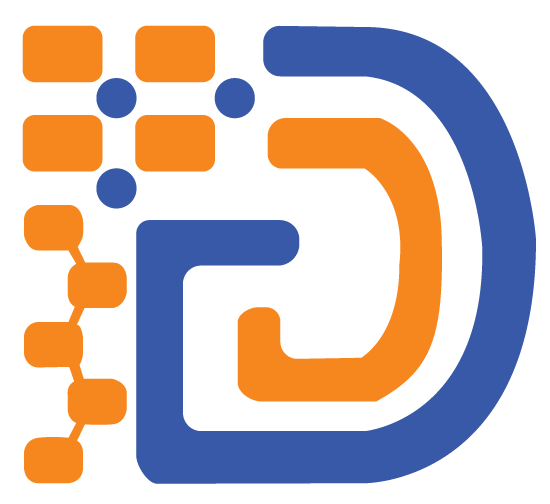What exactly is machine learning? In addition, how does it work? To answer those questions, it is best to break machine learning down into its simplest parts—you know what it means and how you can use it. Machine learning is the ability of computers to learn without being explicitly programmed, using past data as examples of what to do or not do in similar situations in the future. It is a practical application of artificial intelligence, and it’s becoming an increasingly useful tool in many different industries and disciplines, from healthcare to security and everything in between.
The Need for ML
The more companies are investing in machine learning, the more common it becomes. However, what exactly is machine learning? And why do so many people want to use this technology? This blog post will cover what machine learning is, how you can use ML with your business, and some pitfalls to avoid when using ML. Machine learning is a subset of artificial intelligence that uses algorithms to identify patterns or trends in data. Most people think of it as a system that predicts outcomes based on data input, but there are also systems that learn from their own errors and make adjustments accordingly. There are three types of machine learning: supervised, unsupervised, and reinforcement learning. Supervised ML has an explicit set of training data that it learns from. Unsupervised ML has no predetermined training data set; instead the system finds patterns within the data itself by comparing similar items together to find clusters or groups of similar items while discarding other items that don’t fit into these clusters or groups. Reinforcement learning uses feedback loops to adjust its behaviour through trial-and-error over time.
The History of ML
Machine learning has actually been around for over sixty years. Statistics has been with us for quite some time, but the field of machine learning as we know it today wasn’t created until the 1950s. Early uses of ML were in military simulations, artificial intelligence (AI), pattern recognition, signal processing, data mining and econometrics. It wasn’t until later that its use was extended to other fields such as finance, healthcare, information retrieval, geology and marketing. Today’s major players in machine learning are Google (Google Brain), Facebook AI Research Lab (FAIR) and IBM Watson; they all have different areas of focus. Google focuses on improving computer vision, speech recognition and language understanding systems while FAIR researches speech-to-text translation systems, text understanding from natural language queries and intelligent responses for conversational systems like chatbots. IBM Watson focuses on cognitive computing which allows them to process unstructured information such as images or video footage without human input.
Types of Machine Learning
Machine learning algorithms are used to allow computers to learn from experience in a way that has more depth than standard programming. Machine learning allows you to use pre-programmed behaviours to tackle problems instead of writing specific steps, which makes machine learning ideal for new situations that don’t have an exact set of instructions on how to handle them.
The two most popular types of machine learning techniques are supervised and unsupervised machine learning techniques. Supervised techniques require input parameters like the examples below in order for the algorithm to output an answer:
*A meteorologist using climate data with his or her own knowledge about regional climates can forecast with a high degree of accuracy whether weather in Chicago tomorrow will be hot or cold. The number of times that something happens during a certain period (the training phase) determines the confidence level in predicting future occurrences (the testing phase). In this example, since there are so many observations during the training phase, if the observations during the testing time match what was observed during training then there is likely to be a high probability that those same events will happen again.*
*Unsupervised techniques do not need such inputs because they group similar objects together. For example, consider pictures taken at different times of day. An unsupervised technique would find differences between these pictures rather than grouping them together according to when they were taken.*
Benefits of ML
Data may be the most important asset that an enterprise has. Whether you work in data science, finance, human resources, or marketing, if you’re responsible for managing a company’s data then the growth of your company depends on making sure this data can keep up with the ever-increasing demands being placed on it. Machine learning can provide insights that will allow your company to tailor its business strategy to an ever-changing market and provide more accurate products/services for its customers. It can also help protect against cyberattacks by looking for patterns in traffic so that companies know when they are under attack (hence why many enterprises employ machine learning as part of their security measures). ML offers huge benefits to large enterprises which have the capability to invest significant amounts of money in training computers how to make decisions based on what they see. However, smaller organizations often do not have access to these resources and skillsets and thus are less likely to take advantage of ML’s benefits. If we want smaller businesses who don’t have access to all the data scientists and computing power that larger firms do, then we need some sort of democratization where smaller organizations can use AI technologies at low cost; otherwise ML won’t be accessible enough for everyone who needs it.
How ML Works
You’ve probably seen the term machine learning used in a variety of contexts, but what does that actually mean? Machine learning is one way to make a computer learn from the data that’s being generated by making predictions about future events. With machine learning, computers analyze their surroundings with artificial intelligence to learn how to do things on their own. This type of artificial intelligence has some significant advantages over traditional methods of programming where programmers have to write all the lines of code upfront.
In this blog post, we’ll explore exactly what ML is and how you can use it for your own business. For example, if you’re interested in building an ML-powered chatbot that understands natural language, you’ll need to first train it with examples of good responses. After enough training sessions, your chatbot will be able to understand text input and respond accordingly (e.g., customer service chatbots). Another common application of ML is prediction; think back to our discussion on algorithms earlier in the post. One such algorithm is linear regression which predicts values based on inputs from other similar instances or variables (e.g., predicting the stock market price using historical data).
AI vs. ML
AI (Artificial Intelligence) involves a machine carrying out specific, programmed tasks. ML (Machine Learning) involves giving the machine more freedom to learn from its experiences without being told exactly what to do. Machine learning has proven invaluable for identifying patterns in data sets that are too big for human beings to process manually. Some applications of ML include natural language processing, self-driving cars, facial recognition software, and computer game strategy. For example, if you give a robot access to enough movies and tell it which ones have been classified as romantic comedies, after some time it will be able to identify which new movies are romantic comedies because it will be trained on this information.
Training an AI System using Neural Networks
To learn to do something new, you need to show the AI a lot of examples of what you want it to do. Since not all knowledge is written down, many people think AI has trouble learning about our world. But this isn’t true! Scientists have figured out a way for AI to learn from human input, through the process called Deep Neural Networks. This can happen either by giving the neural network lots of pieces of data (these are called supervised learning) or by teaching the neural network from scratch with a lot of little bits of guidance (called unsupervised learning).
Learning how to start a new business from conception to execution. Machine Learning also helps us find patterns in large datasets that we might otherwise miss. Did you know that if two people live close together they’re more likely to become friends? Machine Learning algorithms are really good at finding patterns like these in our day-to-day lives.
Using APIs in Practice
In this blog post, we will cover how you can use APIs in your application. We’ll use a hypothetical app called Name Guesser as an example. The basic idea of the app is that a user provides some text that they want to translate into an appropriate name, like if they type Tom Cruise as the input text, then the app will generate choices for words with similar pronunciations. To create Name Guesser, we need to first create its data model. For example, when users provide input text for guessing names from their word list (e.g., Tom Cruise), then there should be many possibilities in response. We want to find which are most likely guesses based on the input text. To do so, we need to map the most probable guesses to those possible answers. There are several steps in doing so:
- Translate the user’s provided word-text into an alphabetical set of letters;
- Get all possible combinations of matching letters that match those letters;
- From those matches, get all possible dictionary words;
- Look at each dictionary word’s syllables and get all matching English words whose syllables match those syllables.
2nd sentence – The basic idea of the app is that a user provides some text… -> Users provide some text (e.g., Tom Cruise) and we want to figure out what word or words match it best, given a database of potential options. When the user enters ‘Tom Cruise’, the program would run through these steps: translating their input text into an alphabetical set of letters (to remove any differences between lowercase and uppercase characters); getting all possible combinations of matching letters that match those letters; finding all possible dictionary words that have syllables matched by those letter combos; selecting only those English words whose syllables also match up with one or more letter combos.




